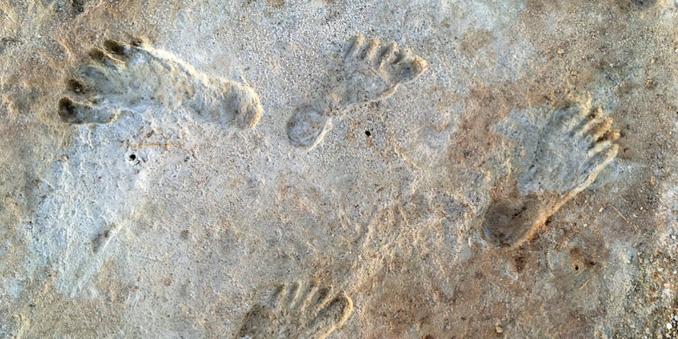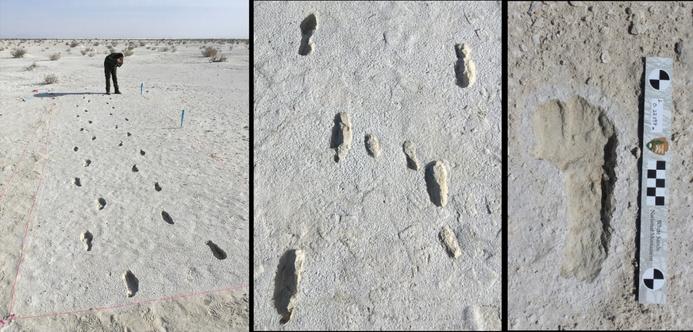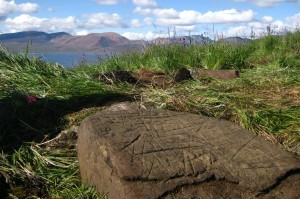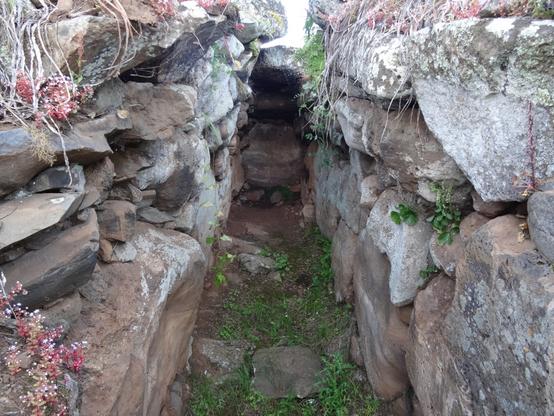...and the research article is open access here:
Paleolake geochronology supports Last Glacial Maximum (LGM) age for human tracks at White Sands, New Mexico
https://doi.org/10.1126/sciadv.adv4951New dating confirms White Sands footprints in New Mexico are 23,000 years old. More at
https://www.anthropology.net/p/human-presence-in-white-sands-before
Human Presence in White Sands Before Clovis
A prehistoric footprint trail reshapes the peopling of the Americas
This led to the discovery of both Harlan’s ground sloth and human footprints. 📷 AKFisher More:
http://www.megalithic.co.uk/article.php?sid=59099Fossilized Footprints - White Sands National Park: New dating confirms White Sands footprints in New Mexico are 23,000 years old - pushing the date of human arrival in the Americas earlier, more on our page.. For 80 years, only a small collection of fossilized footprints were known to exist at White Sands. However, in 2006, a group of scientists noticed dark spots dotting the expanse of the lakebed that appeared to be footprints. Their curiosities lead them to dig up these dark spots in 2009.
Noatak prehistoric site contains new artifacts for Alaska
Archaeologist Scott Shirar and his team have made a new discovery: four decorated clay disks that appear to be the first artifacts of their kind found in Alaska.
That’s when we realized we had something unique.” More details on our page. 📷 AKFisher More:
http://www.megalithic.co.uk/article.php?sid=61894Noatak Petroglyphs: A look at the petroglyphs found in the Noatak National Preserve - the first of their kind found in Alaska. Discovered whilst excavating the remains of three prehistoric lakefront dwellings. “The first one looks like a little stone that had some scratch marks on it,” said Shirar, research archaeologist at the University of Alaska Museum of the North. “We got really excited when we found the second one with the drilled hole and the more complicated etchings on it.
...and here's where else you can enter the competition and follow our news updates:
https://www.megalithic.co.uk/article.php?sid=2146412539 /5
Win a copy of Stone Lands, the wonderful new book by Fiona Robertson, and copies now available to buy from us here with worldwide shipping - details here:
https://www.megalithic.co.uk/article.php?sid=2146416000 #archaeology #prehistory #books #history #stones

